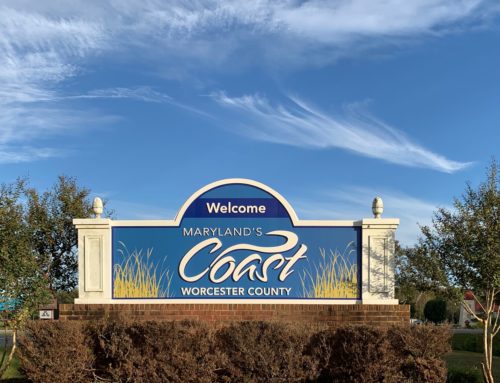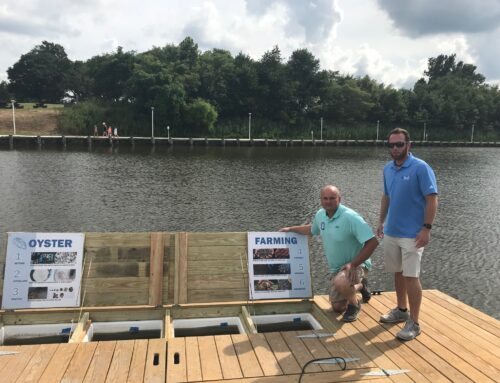While working on Dorchester Economic Development’s Water Moves Us campaign, we were struck by the strong role the arts played in Cambridge. We wrote the following article that appeared in the Banner, Mid-Shore Business Journal, Chamber newsletter and When Mickey Love arrived in Cambridge in 2007 to run the Dorchester Center for the Arts (DCA), she saw firsthand how the beauty of the environment inspired people to create amazing art. As she rolled up her sleeves to join the board and staff to plan DCA’s expansion and relocation to the historic Nathan building, she quickly discovered that the arts would be a key player in growing Dorchester County’s creative economy.
“I used to say when I first moved here that you couldn’t throw a rock in Dorchester without hitting an artist,” she laughs, adding, “The arts have quietly and quickly become an economic and employment force in the county, creating artistic enterprises, supporting restaurants and retailers, and attracting tourists.”
Since August 2008, the landmark Art Deco Building at 321 High Street has been home to the Dorchester Center for the Arts. With approximately 500 members, a world-class artisans’ shop, more than 100 classes and workshops, a dozen performances, and over 5,000 visitors each year, it is the anchor of the county’s arts industry. The 14,000-square-foot former Nathan’s Furniture Store was renovated in two stages. The recently completed second-floor performance and rental space will increase visitors and visibility.
Love points to the county’s successful application for Cambridge to be one of the earliest state-designated Arts & Entertainment Districts in 2003 as the opening act of a three-act play. Spearheaded by a small group of downtown pioneers including Joie de Vivre Gallery owner Joy Staniforth, artist Greg Van Di Viser, and business owner Heather Rosato, the A&E District was re-certified last year for ten more years.
Dorchester County Economic Development Director Keasha Haythe recognized the critical role the arts play in making the county an attractive place for businesses to locate or expand. She featured the DCA in Dorchester’s new marketing campaign ‘water moves us’ and has included creative enterprises in the county’s economic strategy.
“A thriving arts scene is an integral part of a community’s quality of life,” says Haythe. “The positive energy – and positive cash flow – of Second Saturdays alone is palpable and fuels the success of many of our small businesses.” She cites the number of people attending exhibit openings at DCA, shopping at Sunnyside, dining at Bistro Poplar, or enjoying live music at Leaky Pete’s as just a few examples of the economic impact of such events.
Haythe quotes a report released in November 2013 by the Maryland State Arts Council demonstrating how the arts intersect with the economy at key leverage points including employment, state and local tax revenue, and visitor spending. “The MSAC’s report of nonprofit arts organizations such as the DCA shows that the arts are a billion dollar business in Maryland. Statewide, the arts support 12,700 jobs, fund $427 million in salaries, and generate $48 million in local taxes.”
Events are a large part of making the arts a destination for residents and visitors. The DCA’s Arts Showcase alone attracts thousands downtown each September. In 2012, more than 7.7 million people in Maryland attended art venues, events, classes and workshops according to the MSAC. More than 60% of those attendees – 4.8 million – enjoyed free events like the Arts Showcase and Second Saturdays.
Amanda Fenstermaker, Dorchester County’s tourism director, has also championed the arts as a way to attract visitors. Her office commissioned local muralist Michael Rosato, whose studio is in the A&E District, to create two new public art murals in Cambridge based on James Michener’s acclaimed novel Chesapeake. DCED’s marketing campaign features Rosato’s mural of geese in flight seen on the side of an old trolley next to Powell Realtors.
Love applauds recent efforts by the City of Cambridge to promote the creative economy as an important part of downtown’s continued revitalization. She believes that the A&E tax benefits are a significant marketing opportunity for artists living or working in areas without such a designation like Easton, St. Michaels or Oxford.
“We need to educate artists about the benefits of moving their studios to the A&E District and promote real estate that can be converted to studios or live/work spaces.”
Love envisions the final act of Cambridge is yet to be written but could include a creative incubator to nurture entrepreneurs and small businesses in visual arts, written works, musical and dance composition, film and photography, clothing design, and folk art. She also imagines the community would be an ideal location for an art and design high school due to the county’s central Eastern Shore location and points to the success of the Barbara Ingram School for the Arts that opened in Hagerstown’s A&E District in 2009.
To learn more about the Dorchester Center for the Arts and the county’s creative community visit www.DorchesterArts.org or call 410.228.7782. For information on technical services, finance programs, and location assistance available to creative entrepreneurs and businesses, contact Dorchester County Economic Development at 410.228.0155 or visit www.ChooseDorchester.org.







